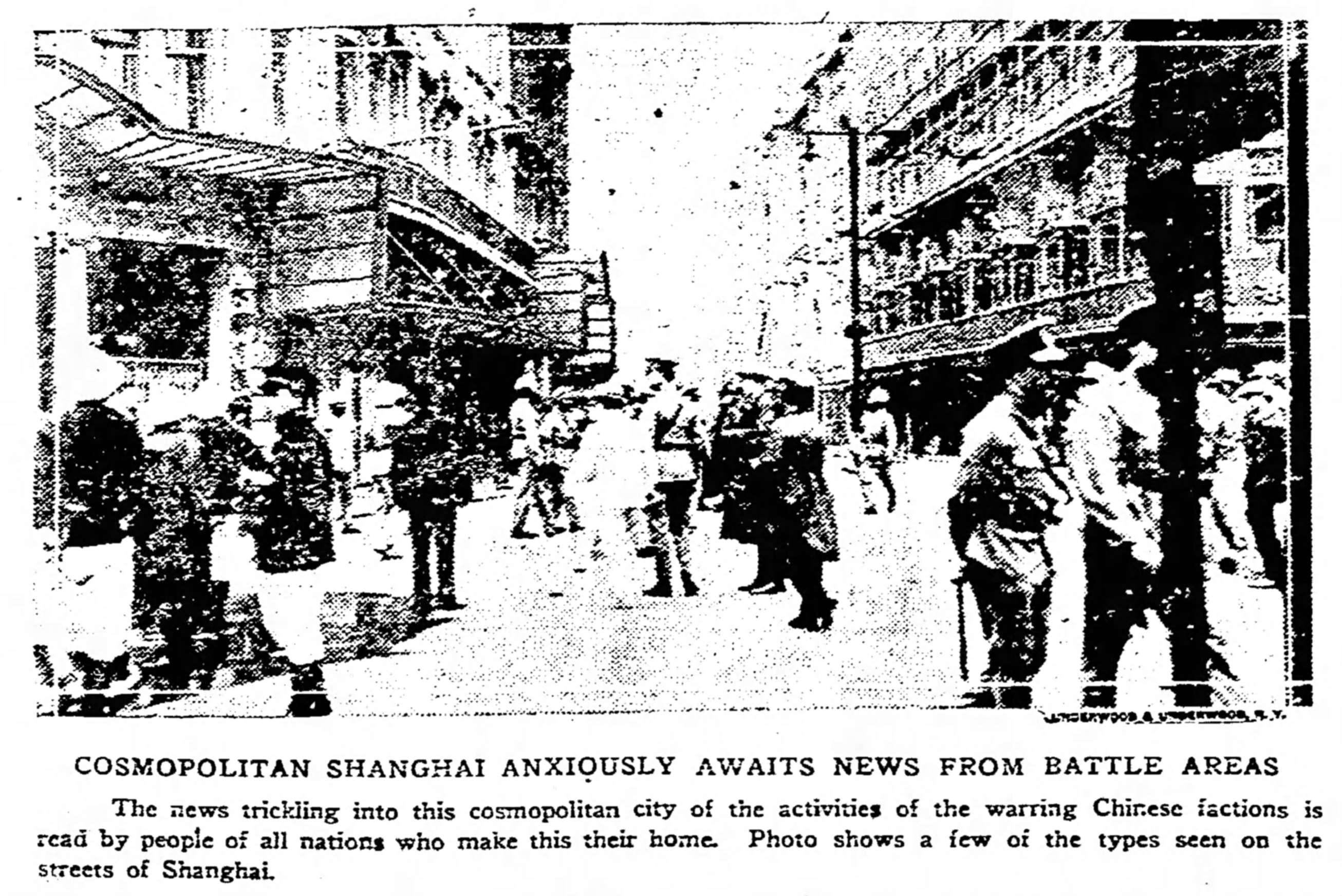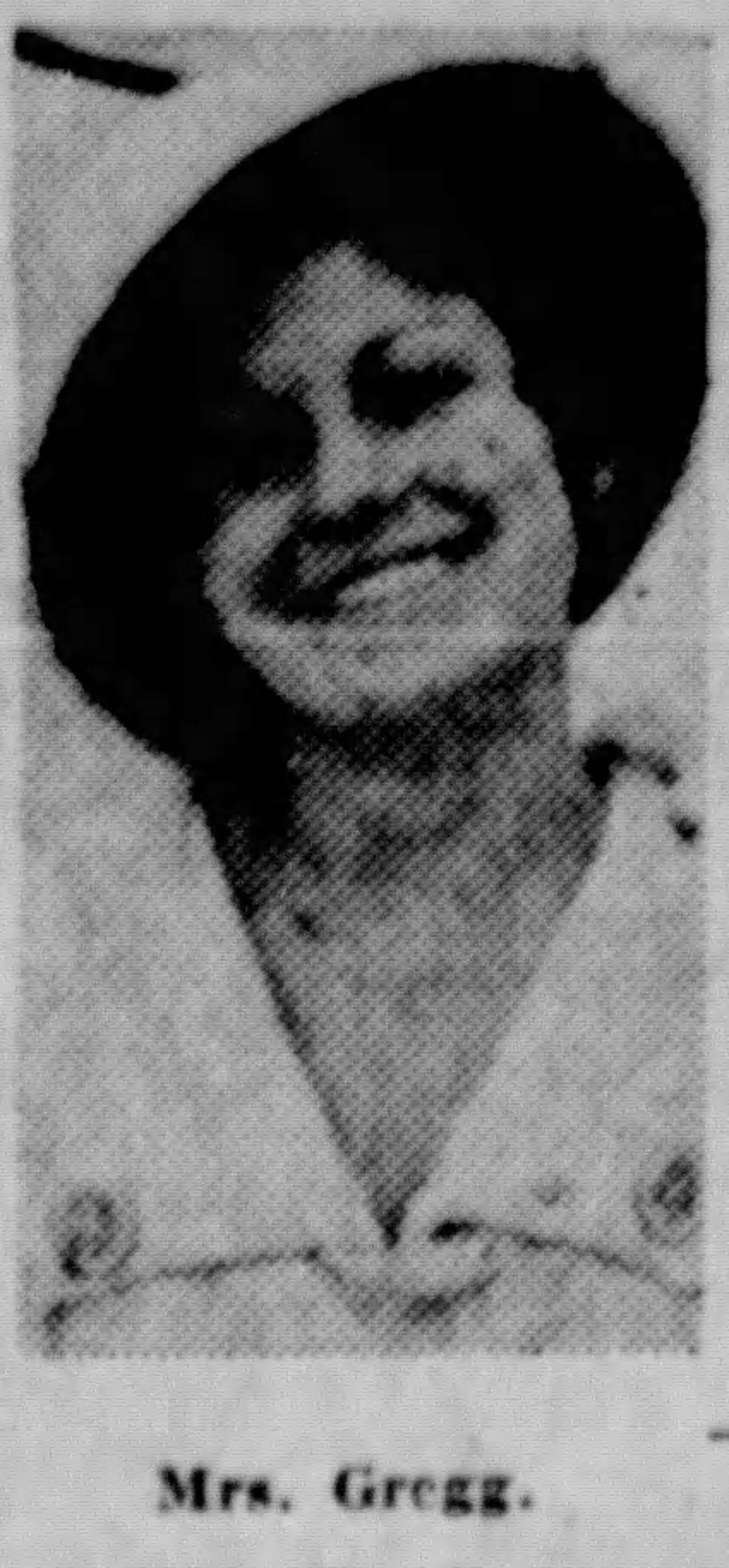Posted: April 17th, 2016 | No Comments »
Readers of my book Midnight in Peking will be fully aware of who ETC Werner was – the father of the murdered girl Pamela Werner, killed in 1937 Peking. Here is a picture of Werner, while serving as a consul…he is front row, fifth from left with full dress and sword….

Posted: April 16th, 2016 | No Comments »
On March 21–22, 1927, KMT and CCP union workers led by Zhou Enlai and Chen Duxiu launched an armed uprising in Shanghai, defeating the warlord forces of the Zhili clique. The victorious union workers occupied and governed urban Shanghai except for the International Settlements prior to the arrival of the NRA’s Eastern Route Army led by Generals Bai Chongxi and Li Zongren.
This picture, relayed back to the world’s media, shows the heavy police and army presence on a Shanghai street in the wake of the uprising…

Posted: April 15th, 2016 | No Comments »
In April 1933 Ms Dorothy Mabry of San Antonio, Texas married Lieutenant Otis Cockerill Gregg Senior of Wayne, Nebraska in Shanghai. Otis was, at the time, serving aboard the Houston as a naval aviator, the flagship of the US Asiatic Fleet, stationed out of Shanghai. Apparently they honeymooned in Japan to see the cherry blossom. A year later the Gregg’s rotated out of Shanghai to Pensacola. They remained married for 62 years and had three sons, ten grandchildren and thirteen great grandchildren. The picture of herself Dorothy sent from Shanghai to Otis’s local paper The Lincoln Star (Nebraska) caught my eye as she looks so happy…

Posted: April 14th, 2016 | No Comments »
A lovely collection of photographs of Singapore’s Tai Thean Kew Chinese circus from Adele Wong, whose ancestors founded the circus in the 1920s…should be on your coffee table!

Life Beyond the Big Top is a photo book that captures the history of the Tai Thean Kew Circus, a once-great Chinese circus established in Singapore in 1929. Adele Wong’s ancestors founded the circus, and through her eyes we get a glimpse of an almost five-decade-long performing career
Life Beyond the Big Top is a photo book that captures the history of the Tai Thean Kew Circus, a once-great Chinese circus established in Singapore in 1929. The collection of old photographs and suriving props and costumes that makes up this visual documentation belongs to Sze Ling Fen and Wong Fu Qi, lead performers of the circus. Sze Ling Fen’s progenitors founded the circus, and through her eyes we get a glimpse of an almost five-decade-long performing career. Authored by their granddaughter, Adele Wong, be invited to visit her grandparents, listening and looking as the story about the humble beginnings of a pioneering, family-run Chinese circus unfolds.
Be transported to a front-row seat, viewing the dazzling circus acts and astounding animals at the peak of the circus success, before running offstage to join the circus folks in their nomadic lives and private adventures as they travel around the region. Discover the evolution of live performance shows after the end of the circus as these performers adapt their skills to changing demands. Finally, reminisce as we return to their present-day retirement and rummage through their collection of old performing items and costumes.
Posted: April 10th, 2016 | No Comments »
A bit of a break in posting as I’m off to Bucharest for a few days – the Paris of the East; The Pyongyang of the North?? Who knows these days. Here though, from 1935, a rather sweet reminiscence of old Shanghai from a 1935 Little Orphan Annie comic strip……

Posted: April 9th, 2016 | 1 Comment »
Luise Rainer got the role in the film adaptation of Pearl Buck’s The Good Earth that Anna May Wong desperately wanted and was denied – O Lan. Rainer got the Oscar for Best Actress, in yellowface, which must have rankled with poor Anna May. The excuse was that as O Lan had to kiss Wang (played by white actor Paul Muni) the Hays Code, which prescribed miscegenation and inter-racial kissing, would prevent her from being cast. They offered Anna May the part of Lotus, a rather unsympathetic character – Anna May declined it pointing out that giving an unsympathetic character to an ethnically Chinese actress in a film who’s leads were all white actors in yellowface was ridiculous.
The year the film came out, 1937, Rainer sent six peach trees to Madame Chiang. Quite why I’m not sure, but apparently Madame Chiang had said she admired Rainer’s performance in the film. Dusseldorf-born Rainer, who was a staunch anti-fascist, did remain a friend of China – the Japanese invasion occurred in 1937 of course. In February 1938 Rainer hosted a benefit at Clara Bow’s It Cafe in Hollywood for Chinese war orphans and, in 1943, she attended a reception at the Ambassador Hotel for China’s Madame Chiang. It was held in connection with a starry China relief fundraiser staged at the Hollywood Bowl. She was later given an award of recognition from the China Relief Legion for her humanitarian efforts during World War II; the award (below) is signed at the bottom by Madame Chiang.




Posted: April 8th, 2016 | No Comments »
Owen Hatherley’s recent book The Ministry of Nostalgia made the point that the old Empire Marketing Board’s graphics were equally as good as the more famous images from London Transport and the Festival of Britain – it’s just they’re not so politically correct these days and so don’t make good prints to kwik-frame in London flats…Still the EMB’s art work was excellent and revealing….for instance the poster below… as you can see Britain accounted for approximately 10% (or less) of China’s imports….when you consider how many gunboats, regiments and the rest of the palava we stationed in Shanghai and around China it doesn’t seem overly worth it!

Posted: April 7th, 2016 | No Comments »
The recently published fourth volume of Pierre Loti’s journals (1896-1902) is a treat for French readers (or those struggling with schoolboy French) as it recalls Loti’s 1900 journey through India, French Indo-China, China itself and on to Japan. During this trip Loti spent some time in Peking, on which he comments, as well as Pei-ho, Ningpo and Ninghai (the surrounding area) and Takou, before heading on to Japan. There are also trips and comments on Saigon, Cambodia, Korea and Angkor.













